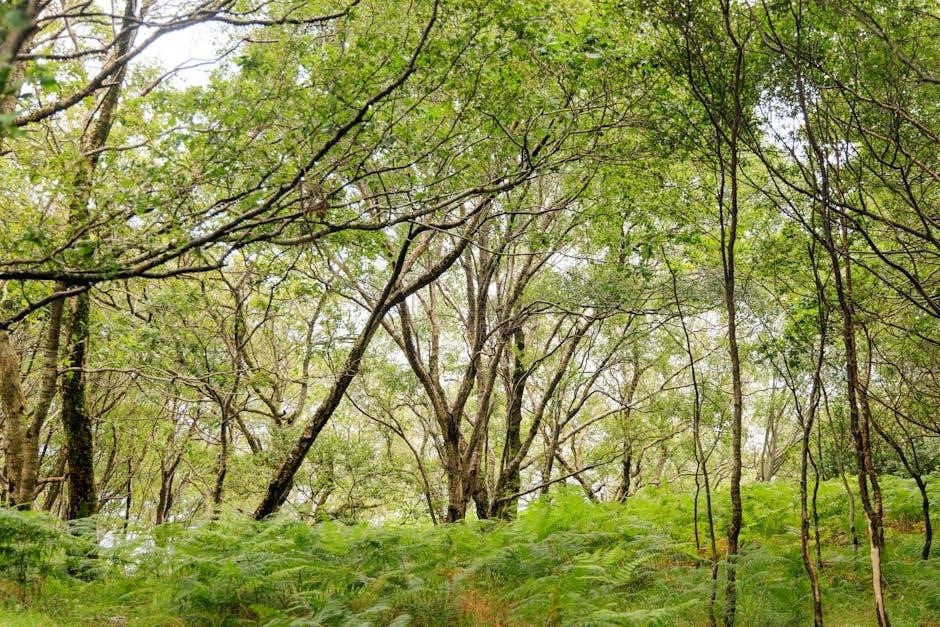Canopy instructions provide essential guidance for assembling and maintaining outdoor structures like gazebos or pop-up shelters. They include step-by-step assembly processes, safety tips, and tools required to ensure stability and durability. Clear instructions help users achieve professional results, whether for temporary or permanent installations, ensuring safety and structural integrity.
What Are Canopy Instructions?
Canopy instructions are detailed guides outlining the assembly, installation, and maintenance of canopy structures. They include step-by-step processes, material lists, and safety precautions. These instructions ensure proper construction of gazebos, pop-up shelters, or temporary covers. They cover frame assembly, fabric installation, and securing methods. Whether for hard-top or soft-top canopies, following these instructions guarantees stability, safety, and longevity. They are essential for achieving a professional setup and maintaining structural integrity.
Importance of Following Canopy Instructions

Adhering to canopy instructions ensures safe and correct assembly, preventing structural failures. Proper installation enhances durability, withstanding weather conditions like wind and rain. Clear guidelines minimize errors, saving time and effort. Safety is prioritized, reducing hazards from improper setups. Following instructions also maintains warranty validity and extends the canopy’s service life. Compliance with local regulations is ensured, avoiding legal issues. Overall, adherence guarantees a stable, secure, and long-lasting canopy structure, optimizing its functionality and aesthetic appeal in outdoor spaces.
Understanding Canopy Components
Understanding canopy components involves knowing frames, fabric, hardware, poles, ropes, and nails. These elements ensure structural integrity and stability, crucial for safe and effective assembly.
Frame and Hardware
The frame and hardware are critical components, providing structural support and stability. Frames are typically made from durable materials like aluminum or steel, ensuring longevity. Hardware includes bolts, connectors, and brackets that secure the frame together. Proper assembly of these parts is essential to withstand weather conditions and ensure safety. High-quality materials and precise fitting prevent loosening over time, maintaining the canopy’s integrity and reliability.
Canopy Fabric and Materials
Canopy fabrics vary in quality and purpose, with common materials like polyester, Sunbrella, or polycarbonate. Polyester is durable and water-resistant, while Sunbrella offers premium UV protection. Polycarbonate is ideal for hard-top canopies, providing strength and transparency. Fabric choice impacts longevity, weather resistance, and aesthetic appeal. Proper care, including cleaning and storage, extends the material’s lifespan, ensuring continued functionality and visual appeal for outdoor spaces.
Additional Features (e.g., Poles, Ropes, Nails)
Additional features like poles, ropes, and nails are crucial for canopy stability. Poles are typically made of durable materials like aluminum or steel, offering structural support. Ropes and straps secure the canopy fabric tightly, preventing sagging or damage. Nails and stakes anchor the structure to the ground, ensuring stability in windy conditions. Hardware such as bolts and connectors further enhance the canopy’s structural integrity, making it weather-resistant and long-lasting for outdoor use.

Tools and Materials Needed
Essential tools include wrenches, screwdrivers, and hammers. Materials like durable fabric, sturdy poles, ropes, and ground stakes ensure stability and longevity.
Essential Tools for Assembly
The assembly process requires specific tools to ensure accuracy and efficiency. Wrenches and screwdrivers are crucial for securing bolts and screws. A hammer is needed for tapping parts into place. Additionally, an Allen wrench may be necessary for certain hardware. Pliers can help grip small components, while a measuring tape ensures proper alignment. Having these tools ready simplifies the assembly and guarantees a sturdy structure.
Recommended Materials for Stability
For optimal stability, use high-quality materials like durable ground nails, heavy-duty ropes, and sturdy stakes. Weather-resistant fabrics such as polyester or Sunbrella are ideal for withstanding outdoor conditions. Metal or wooden frames should be treated for longevity. Concrete footings are recommended for permanent structures. Ensure all materials are compatible with local weather conditions, such as heavy rain or snow. Additional weights or sandbags can enhance stability. Using these materials ensures a secure and long-lasting canopy setup.
Installation Process
The installation process involves thorough preparation, precise assembly, and secure fastening to ensure a smooth and durable setup. Always follow instructions carefully for a safe and stable canopy.
Preparation and Site Selection
Before assembling your canopy, ensure the site is level, well-drained, and clear of debris. Choose a location with minimal wind exposure and comply with local building regulations. Mark the area accurately, considering the canopy’s dimensions. Gather all necessary tools and materials beforehand. Check for underground utilities and ensure the ground is firm. Proper preparation ensures a safe and stable setup, adhering to both safety guidelines and manufacturer recommendations.

Step-by-Step Assembly Guide
Securing the Canopy
Securing the canopy involves tightly anchoring the fabric to the frame and ensuring all corners are firmly staked. Use ropes and nails to fasten the edges, preventing flapping in the wind. Check for snug fitment and even tension to avoid damage. Ensure all hardware is tightly bolted and consider additional weights or anchors for stability. Regularly inspect and tighten connections to maintain structural integrity, especially in areas prone to harsh weather conditions.
Choosing the Right Canopy Style
Selecting the ideal canopy style depends on durability, weather resistance, and aesthetic preferences. Hard-top canopies offer robust protection, while soft-top options provide flexibility and portability for various outdoor settings.

Hard-Top vs. Soft-Top Canopies
Hard-top canopies, made from materials like steel or polycarbonate, offer superior durability and weather resistance, ideal for permanent structures. Soft-top canopies, typically fabric-based, provide portability and ease of assembly, suitable for temporary setups. Hard-tops withstand harsh conditions better but are heavier, while soft-tops are lightweight and easier to transport, making them perfect for seasonal use or events. Each style caters to different needs, ensuring versatility in outdoor applications.
Pros and Cons of Each Style

Hard-top canopies offer durability and wind resistance but are heavier and more complex to install. Soft-top canopies are lightweight and easy to set up but may not withstand harsh weather. Hard-tops suit permanent structures, while soft-tops are ideal for temporary use. Understanding these pros and cons helps users choose the best option for their specific needs, ensuring functionality and satisfaction in various outdoor settings and applications.
Design Considerations
When designing a canopy, consider materials, size, and style to match your space. Durable materials like polycarbonate or steel offer longevity, while fabrics provide a softer aesthetic. Choose sizes that fit your area, such as 10×10 or 12×12 feet. Styles range from pergolas to gazebos, with options for waterproof or UV-resistant features. Ensure the design complements surrounding structures and adheres to local building codes. Aesthetics and functionality should balance for optimal results and user satisfaction in outdoor settings.

Safety Precautions
Always follow safety guidelines when assembling canopies. Keep heat sources away from fabric, secure panels in snowy areas, and use safety goggles during installation to prevent accidents.
General Safety Guidelines

Always prioritize safety when assembling or using a canopy. Ensure the area is clear of obstacles and avoid overhead obstructions. Use safety goggles during installation to protect eyes from debris. Keep flammable materials away from the canopy fabric, and never place heat sources near it. Secure all panels tightly, especially in windy or snowy conditions, to prevent structural damage. Adhere to all local building codes and regulations for outdoor structures. Read and follow the manufacturer’s instructions carefully to ensure safe assembly and usage.
Weather-Related Warnings
Always check weather conditions before assembling or using a canopy. Avoid installation during strong winds or storms, as they can cause structural instability. If snow is expected, ensure the canopy is designed to handle the weight to prevent collapse. Secure all ropes and stakes firmly to withstand gusts. In regions with frequent snowfall, choose materials that can bear the load. Never leave the canopy unattended in harsh weather conditions to prevent damage or collapse.
Fire and Heat Safety
Keep all heat sources, including grills and fire pits, away from the canopy fabric to prevent fires. Use flame-retardant materials if cooking nearby. Regularly inspect fabric for burns or damage. Never store flammable items under the canopy. Follow manufacturer guidelines for fire-resistant treatments. Ensure proper ventilation to avoid trapping heat. Be cautious with sparks or embers that could ignite the fabric. Always prioritize fire safety to protect your structure and surroundings from potential hazards.

Maintenance and Care

Regularly clean the canopy fabric with mild detergent, avoid harsh chemicals, and ensure it dries thoroughly to prevent mold. Inspect for damage and store securely during off-seasons.
Cleaning the Canopy
Cleaning the canopy involves using mild detergent and water to remove dirt and stains. A soft brush can gently scrub stubborn spots. Rinse thoroughly with a garden hose, ensuring no soap residue remains. Allow the fabric to air dry completely to prevent mold or mildew. Avoid using harsh chemicals or abrasive cleaners, as they may damage the material. Regular cleaning extends the canopy’s lifespan and maintains its appearance. Additionally, clearing debris like leaves ensures proper water runoff and prevents sagging. Always follow the manufacturer’s specific cleaning instructions for optimal results and to preserve the warranty. This ensures the canopy remains durable and continues to provide reliable shade and protection. Proper maintenance also involves inspecting for any tears or wear, which should be addressed promptly to prevent further damage. By keeping the canopy clean and well-maintained, it will remain a functional and attractive addition to any outdoor space. Regular cleaning is a simple yet effective way to ensure the longevity and performance of the canopy. It’s important to establish a routine cleaning schedule, especially in areas with heavy rainfall or leaf fall, to keep the canopy in its best condition. This proactive approach not only enhances the canopy’s appearance but also ensures it continues to serve its purpose effectively. Cleaning the canopy is a straightforward process that requires attention to detail and the right cleaning agents to maintain its quality and functionality. By following these steps, users can enjoy their canopy for years to come. The canopy’s fabric is designed to withstand various weather conditions, but proper care is essential to uphold its integrity. Cleaning the canopy regularly also helps in maintaining the structural stability of the entire gazebo or outdoor structure, ensuring it remains safe and secure. Always remember to clean the canopy after extreme weather events to remove any accumulated debris that could cause damage over time. This simple maintenance task can prevent costly repairs and extend the overall service life of the canopy. So, make cleaning a priority to keep your outdoor space looking its best and functioning optimally. The canopy’s durability depends on consistent care, and cleaning is a fundamental part of that routine. By dedicating a little time to cleaning, you can protect your investment and enjoy the benefits of a well-maintained canopy for seasons to come. Regular cleaning not only preserves the canopy’s appearance but also ensures it remains a safe and reliable shelter from the elements. This practice is crucial for maintaining the structural integrity and aesthetic appeal of the canopy. Therefore, incorporating a regular cleaning schedule into your maintenance routine is highly recommended. The canopy’s performance and longevity are directly tied to how well it is cared for, making cleaning an essential part of its upkeep. By staying proactive with cleaning, you can enjoy a sturdy, attractive canopy that enhances your outdoor living experience. Cleaning the canopy is an easy and effective way to maintain its quality and ensure it continues to provide the shade and protection you need. So, take the time to clean your canopy regularly and reap the benefits of a well-maintained outdoor structure. The canopy’s ability to withstand harsh weather conditions depends on how well it is maintained, and cleaning plays a vital role in this process. By keeping the canopy clean, you can prevent damage from dirt, debris, and mildew, ensuring it remains in excellent condition. Regular cleaning is a simple yet crucial step in maintaining the canopy’s appearance and functionality. It’s a small effort that makes a significant difference in the long run. So, make cleaning a priority to keep your canopy looking and performing its best. The canopy’s durability and effectiveness are enhanced through consistent cleaning, making it a worthwhile investment of time and effort. By following proper cleaning techniques and schedules, you can extend the life of your canopy and enjoy it for many years. Cleaning the canopy is a straightforward process that yields lasting benefits, ensuring your outdoor space remains comfortable and protected. Regular cleaning sessions prevent the buildup of dirt and debris, which can lead to more severe issues if left unchecked. By addressing cleaning needs promptly, you can maintain the canopy’s integrity and ensure it continues to serve its purpose effectively. The canopy’s condition reflects the care it receives, so dedicating time to cleaning is essential for its upkeep. A clean canopy not only looks better but also functions better, providing reliable shade and protection. Cleaning is a fundamental aspect of canopy maintenance, and neglecting it can lead to premature wear and tear. Therefore, it’s important to establish a regular cleaning routine to preserve the canopy’s quality and longevity. The canopy’s performance is directly influenced by its maintenance, and cleaning is a key component of that. By keeping it clean, you can ensure it remains a sturdy and attractive feature of your outdoor space. Regular cleaning prevents the accumulation of debris and extends the service life of the canopy, making it a sound investment for your home. Cleaning the canopy is a simple yet effective way to protect it from damage and ensure it continues to provide the shade and shelter you need. So, take the time to clean your canopy regularly and enjoy its benefits for years to come. The canopy’s ability to withstand the elements depends on how well it is maintained, and cleaning is a crucial part of that process. By keeping the canopy clean, you can prevent damage from dirt, mildew, and debris, ensuring it remains in excellent condition. Regular cleaning sessions are a small price to pay for the longevity and performance of your canopy. So, make cleaning a priority and keep your outdoor space looking its best. The canopy’s durability and effectiveness are significantly enhanced through regular cleaning, making it a worthwhile investment of time and effort. By following proper cleaning techniques and schedules, you can extend the life of your canopy and enjoy it for many years. Cleaning the canopy is a straightforward process that yields lasting benefits, ensuring your outdoor space remains comfortable and protected. Regular cleaning prevents the buildup of dirt and debris, which can lead to more severe issues if left unchecked. By addressing cleaning needs promptly, you can maintain the canopy’s integrity and ensure it continues to serve its purpose effectively. The canopy’s condition reflects the care it receives, so dedicating time to cleaning is essential for its upkeep. A clean canopy not only looks better but also functions better, providing reliable shade and protection. Cleaning is a fundamental aspect of canopy maintenance, and neglecting it can lead to premature wear and tear. Therefore, it’s important to establish a regular cleaning routine to preserve the canopy’s quality and longevity. The canopy’s performance is directly influenced by its maintenance, and cleaning is a key component of that. By keeping it clean, you can ensure it remains a sturdy and attractive feature of your outdoor space. Regular cleaning prevents the accumulation of debris and extends the service life of the canopy, making it a sound investment for your home. Cleaning the canopy is a simple yet effective way to protect it from damage and ensure it continues to provide the shade and shelter you need. So, take the time to clean your canopy regularly and enjoy its benefits for years to come. The canopy’s ability to withstand the elements depends on how well it is maintained, and cleaning is a crucial part of that process. By keeping the canopy clean, you can prevent damage from dirt, mildew, and debris, ensuring it remains in excellent condition. Regular cleaning sessions are a small price to pay for the longevity and performance of your canopy. So, make cleaning a priority and keep your outdoor space looking its best. The canopy’s durability and effectiveness are significantly enhanced through regular cleaning, making it a worthwhile investment of time and effort. By following proper cleaning techniques and schedules, you can extend the life of your canopy and enjoy it for many years. Cleaning the canopy is a straightforward process that yields lasting benefits, ensuring your outdoor space remains comfortable and protected. Regular cleaning prevents the buildup of dirt and debris, which can lead to more severe issues if left unchecked. By addressing cleaning needs promptly, you can maintain the canopy’s integrity and ensure it continues to serve its purpose effectively. The canopy’s condition reflects the care it receives, so dedicating time to cleaning is essential for its upkeep. A clean canopy not only looks better but also functions better, providing reliable shade and protection. Cleaning is a fundamental aspect of canopy maintenance, and neglecting it can lead to premature wear and tear. Therefore, it’s important to establish a regular cleaning routine to preserve the canopy’s quality and longevity. The canopy’s performance is directly influenced by its maintenance, and cleaning is a key component of that. By keeping it clean, you can ensure it remains a sturdy and attractive feature of your outdoor space. Regular cleaning prevents the accumulation of debris and extends the service life of the canopy, making it a sound investment for your home. Cleaning the canopy is a simple yet effective way to protect it from damage and ensure it continues to provide the shade and shelter you need. So, take the time to clean your canopy regularly and enjoy its benefits for years to come. The canopy’s ability to withstand the elements depends on how well it is maintained, and cleaning is a crucial part of that process. By keeping the canopy clean, you can prevent damage from dirt, mildew, and debris, ensuring it remains in excellent condition. Regular cleaning sessions are a small price to pay for the longevity and performance of your canopy. So, make cleaning a priority and keep your outdoor space looking its best. The canopy’s durability and effectiveness are significantly enhanced through regular cleaning, making it a worthwhile investment of time and effort. By following proper cleaning techniques and schedules, you can extend the life of your canopy and enjoy it for many years. Cleaning the canopy is a straightforward process that yields lasting benefits, ensuring your outdoor space remains comfortable and protected. Regular cleaning prevents the buildup of dirt and debris, which can lead to more severe issues if left unchecked. By addressing cleaning needs promptly, you can maintain the canopy’s integrity and ensure it continues to serve its purpose effectively. The canopy’s condition reflects the care it receives, so dedicating time to cleaning is essential for its upkeep. A clean canopy not only looks better but also functions better, providing reliable shade and protection. Cleaning is a fundamental aspect of canopy maintenance, and neglecting it can lead to premature wear and tear. Therefore, it’s important to establish a regular
Inspecting for Damage
Regularly inspect the canopy for damage to ensure its structural integrity. Check for tears, holes, or fraying in the fabric, and examine the frame for rust or dents. Look for signs of mold or mildew, which can weaken the material. Inspect all hardware, such as screws and bolts, to ensure they are secure and not loosened. Address any damage promptly to prevent further deterioration. If repairs are needed, consult the manufacturer’s guidelines or contact a professional for assistance. Regular inspections help maintain safety and extend the canopy’s lifespan. By identifying and addressing issues early, you can prevent minor problems from becoming major repairs. This proactive approach ensures the canopy remains stable and secure, providing reliable shade and protection. Inspecting for damage is a crucial part of maintaining the canopy’s condition and ensuring it continues to function as intended. Always prioritize inspections after extreme weather or heavy use to identify any potential issues. This careful attention will help preserve the canopy’s quality and performance over time. Regular inspections are a simple yet effective way to protect your investment and ensure the canopy remains a safe and durable outdoor structure. By staying vigilant and addressing damage quickly, you can enjoy your canopy for years to come; The canopy’s longevity depends on consistent care, and inspections are a key part of that routine. Take the time to inspect your canopy regularly and keep it in excellent condition. This practice is essential for maintaining the canopy’s appearance and functionality, ensuring it continues to serve its purpose effectively. By prioritizing inspections, you can prevent unexpected issues and keep your outdoor space safe and enjoyable. Regular inspections are a small effort that makes a significant difference in the canopy’s overall performance and lifespan. Stay proactive with your canopy’s maintenance to ensure it remains a reliable and attractive feature of your outdoor area. Inspecting for damage is a straightforward process that yields lasting benefits, ensuring your canopy remains in great shape for years to come. By addressing any issues promptly, you can protect your investment and enjoy the shade and shelter your canopy provides. Regular inspections are a vital part of canopy maintenance, and neglecting them can lead to costly repairs down the line. Therefore, make inspecting for damage a priority to preserve the canopy’s condition and functionality. This simple step can prevent minor problems from escalating and ensure the canopy continues to serve its purpose effectively. By taking the time to inspect your canopy regularly, you can enjoy a safe and durable outdoor structure that enhances your living space. The canopy’s durability and effectiveness depend on how well it is maintained, and inspections play a crucial role in this process. By identifying and addressing damage early, you can extend the canopy’s service life and ensure it remains a valuable addition to your home. Regular inspections are a practical and effective way to protect your investment and maintain the canopy’s quality. So, make inspecting for damage a routine part of your canopy’s care to keep it in excellent condition. The canopy’s ability to withstand the elements and provide reliable shelter depends on how well it is maintained, and inspections are a key part of that process. By staying proactive and addressing any issues promptly, you can enjoy your canopy for many years. Regular inspections are a simple yet crucial step in maintaining the canopy’s integrity and ensuring it continues to function as intended. By prioritizing inspections, you can prevent unexpected problems and keep your outdoor space safe and enjoyable. The canopy’s condition reflects the care it receives, so dedicating time to inspections is essential for its upkeep. A well-inspected canopy not only performs better but also enhances the overall appearance of your outdoor area. Inspecting for damage is a fundamental aspect of canopy maintenance, and neglecting it can lead to premature wear and tear. Therefore, it’s important to establish a regular inspection routine to preserve the canopy’s quality and longevity. By identifying and addressing issues early, you can ensure the canopy remains stable and secure, providing reliable shade and protection. Regular inspections are a small price to pay for the longevity and performance of your canopy. So, make inspecting for damage a priority and keep your outdoor space looking its best. The canopy’s durability and effectiveness are significantly enhanced through regular inspections, making it a worthwhile investment of time and effort. By following proper inspection techniques and schedules, you can extend the life of your canopy and enjoy it for many years. Inspecting for damage is a straightforward process that yields lasting benefits, ensuring your outdoor space remains comfortable and protected. Regular inspections prevent the buildup of unnoticed issues, which can lead to more severe problems if left unchecked. By addressing damage promptly, you can maintain the canopy’s integrity and ensure it continues to serve its purpose effectively. The canopy’s condition reflects the care it receives, so dedicating time to inspections is essential for its upkeep. A well-inspected canopy not only functions better but also enhances the overall appearance of your outdoor area. Inspecting for damage is a fundamental aspect of canopy maintenance, and neglecting it can lead to premature wear and tear. Therefore, it’s important to establish a regular inspection routine to preserve the canopy’s quality and longevity. By identifying and addressing issues early, you can ensure the canopy remains stable and secure, providing reliable shade and protection. Regular inspections are a small price to pay for the longevity and performance of your canopy. So, make inspecting for damage a priority and keep your outdoor space looking its best. The canopy’s durability and effectiveness are significantly enhanced through regular inspections, making it a worthwhile investment of time and effort. By following proper inspection techniques and schedules, you can extend the life of your canopy and enjoy it for many years. Inspecting for damage is a straightforward process that yields lasting benefits, ensuring your outdoor space remains comfortable and protected. Regular inspections prevent the buildup of unnoticed issues, which can lead to more severe problems if left unchecked. By addressing damage promptly, you can maintain the canopy’s integrity and ensure it continues to serve its purpose effectively. The canopy’s condition reflects the care it receives, so dedicating time to inspections is essential for its upkeep. A well-inspected canopy not only functions better but also enhances the overall appearance of your outdoor area. Inspecting for damage is a fundamental aspect of canopy maintenance, and neglecting it can lead to premature wear and tear. Therefore, it’s important to establish a regular inspection routine to preserve the canopy’s quality and longevity. By identifying and addressing issues early, you can ensure the canopy remains stable and secure, providing reliable shade and protection. Regular inspections are a small price to pay for the longevity and performance of your canopy. So, make inspecting for damage a priority and keep your outdoor space looking its best. The canopy’s durability and effectiveness are significantly enhanced through regular inspections, making it a worthwhile investment of time and effort. By following proper inspection techniques and schedules, you can extend the life of your canopy and enjoy it for many years. Inspecting for damage is a straightforward process that yields lasting benefits, ensuring your outdoor space remains comfortable and protected. Regular inspections prevent the buildup of unnoticed issues, which can lead to more severe problems if left unchecked. By addressing damage promptly, you can maintain the canopy’s integrity and ensure it continues to serve its purpose effectively. The canopy’s condition reflects the care it receives, so dedicating time to inspections is essential for its upkeep. A well-inspected canopy not only functions better but also enhances the overall appearance of your outdoor area. Inspecting for damage is a fundamental aspect of canopy maintenance, and neglecting it can lead to premature wear and tear. Therefore, it’s important to establish a regular inspection routine to preserve the canopy’s quality and longevity. By identifying and addressing issues early, you can ensure the canopy remains stable and secure, providing reliable shade and protection. Regular inspections are a small price to pay for the longevity and performance of your canopy. So, make inspecting for damage a priority and keep your outdoor space looking its best. The canopy’s durability and effectiveness are significantly enhanced through regular inspections, making it a worthwhile investment of time and effort. By following proper inspection techniques and schedules, you can extend the life of your canopy and enjoy it for many years. Inspecting for damage is a straightforward process that yields lasting benefits, ensuring your outdoor space remains comfortable and protected. Regular inspections prevent the buildup of unnoticed issues, which can lead to more severe problems if left unchecked. By addressing damage promptly, you can maintain the canopy’s integrity and ensure it continues to serve its purpose effectively. The canopy’s condition reflects the care it receives, so dedicating time to inspections is essential for its upkeep. A well-inspected canopy not only functions better but also enhances the overall appearance of your outdoor area. Inspecting for damage is a fundamental aspect of canopy maintenance, and neglecting it can lead to premature wear and tear. Therefore, it’s important to establish a regular inspection routine to preserve the canopy’s quality and longevity. By identifying and addressing issues early, you
Storage and Seasonal Preparation
Proper storage and seasonal preparation are crucial for extending the life of your canopy. Clean and dry the fabric thoroughly before storing to prevent mildew. Disassemble the frame and store hardware in labeled bags. Use protective covers for both fabric and frame to shield from dust and pests. Secure the stored canopy in a dry, well-ventilated area, away from direct sunlight. Before storing, ensure all parts are in good condition. Consult the manufacturer’s guidelines for specific storage recommendations to ensure your canopy remains in excellent shape for future use. Regular seasonal preparation helps maintain the canopy’s quality and ensures it’s ready for the next outdoor season. By following proper storage techniques, you can protect your investment and enjoy your canopy for years to come. Always check local regulations for any specific storage requirements. Proper storage and seasonal preparation are essential for maintaining the canopy’s condition and ensuring it remains functional and durable. By taking the time to store your canopy correctly, you can prevent damage and extend its lifespan. This careful approach ensures your canopy will be ready for use whenever you need it, providing reliable shade and shelter. Storing your canopy properly also helps preserve its appearance, keeping it looking its best. Regular seasonal preparation is a key part of canopy maintenance, and it pays off in the long run. By following these steps, you can enjoy your canopy season after season without worrying about its condition. Proper storage and seasonal preparation are simple yet effective ways to protect your canopy and ensure it continues to serve its purpose effectively. Taking the time to store your canopy correctly is a small effort that makes a big difference in its longevity and performance. With proper care, your canopy will remain a reliable and attractive addition to your outdoor space for years to come. Regular seasonal preparation helps maintain the canopy’s quality and ensures it’s ready for the next outdoor season. By following proper storage techniques, you can protect your investment and enjoy your canopy for years to come. Always check local regulations for any specific storage requirements. Proper storage and seasonal preparation are essential for maintaining the canopy’s condition and ensuring it remains functional and durable. By taking the time to store your canopy correctly, you can prevent damage and extend its lifespan. This careful approach ensures your canopy will be ready for use whenever you need it, providing reliable shade and shelter. Storing your canopy properly also helps preserve its appearance, keeping it looking its best. Regular seasonal preparation is a key part of canopy maintenance, and it pays off in the long run. By following these steps, you can enjoy your canopy season after season without worrying about its condition. Proper storage and seasonal preparation are simple yet effective ways to protect your canopy and ensure it continues to serve its purpose effectively. Taking the time to store your canopy correctly is a small effort that makes a big difference in its longevity and performance. With proper care, your canopy will remain a reliable and attractive addition to your outdoor space for years to come.
